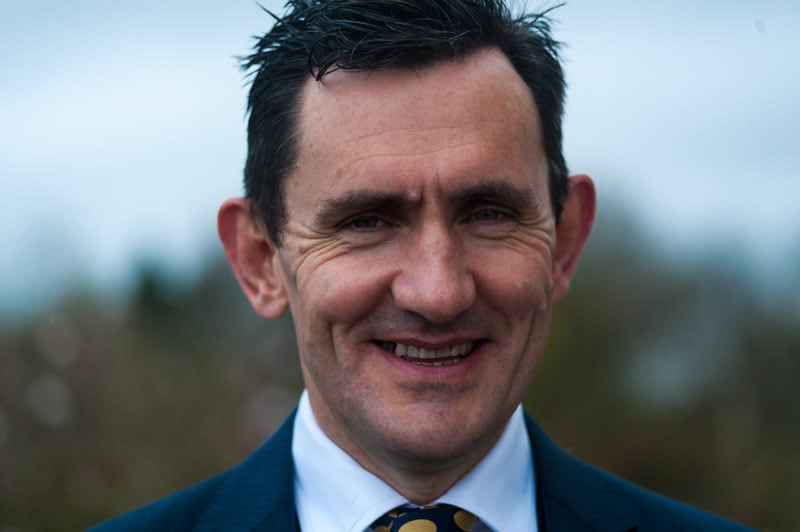Knock-on effects of the overcrowding problems in emergency departments are being felt by GP out-of-hours services, pharmacies and private healthcare providers, those involved in the various sectors say.
“This is this is a busy time anyway so we had doubled up on the number of doctors who are doing shifts in out-of-hours services but we’re still struggling to keep up with demand,” says Dr Mel Bates, medical director and board member at North Doc, which, through the D-Doc and E-Doc services, provides out-of-hours cover to a population of about one million people at eight centres in Dublin.
“We currently have people coming in and making appointments for three and four o’clock in the morning and they’re actually keeping them. It’s very busy now.
“There is a HSE initiative just came through yesterday with more resources for more doctors, but our problem is mainly doctors rather than resources,” he says. “The doctors who would have already booked extra shifts for a busy period, perhaps for financial reasons, if they’re to pay off a mortgage or stuff like that, they’ve already done that.
RM Block
“So we’ve certainly put out a request to get as many extra doctors as we can in the next two months. But that’s going to be a definite struggle, from the doctor point of view rather than from the financial point of view.”
On top of the expected seasonal increase in demand for services, Bates says there is “no question that this is an exceptional event”.
He says that although Group A Strep could have tragic effects on those families impacted, the associated publicity recently has contributed to “tens of thousands of cases of sore throat coming through our doors”.
“People would struggle to get through to GPs’ offices and then get appointments for four or five days hence and so that lack of capacity spilled over into out-of-hours services.”
The numbers continue to be “absolutely massive”, he adds. “We have 150 lines into D-Doc and on occasion you are getting people who are not even getting our answering machine. We geared up in September for a two-week period of increased activity and it looks like it is going to extend out now into a further five or six weeks.”

In Cork, Dr Diarmuid Quinlan of South Doc says the demand being experienced now is exceptional. South Doc had seen about 7,000 patients in the five days around Christmas in part because people did not want to go an emergency department if they could avoid it.
“There is a substantial reluctance among the general public to go to casualty because they know they are going to be waiting for a very substantial length of time and that’s very hard on everyone: old people, those caring for children and also on the staff.”
He says patients are presenting to the out-of-hours service with chest pains and strokes, and one pregnant women was experiencing bleeds. Those who were seriously ill were ultimately still referred to emergency departments. However, the referral rate was down from the norm of about 11 per cent to just over half that, 6 per cent, mainly due to the number of people presenting with influenza.
“We are seeing a lot of people with flu, who are sick and need to be seen but are not sufficiently ill that they need to be referred to the emergency department,” he says.
The HSE has asked members of the public to consider calling to community pharmacies before going to a hospital. One manager of an independently run pharmacy in Dublin describes levels of demand as “insane”.
“They are coming into us because they can’t get a GP visit for three or four days – that’s not every practice but certainly some – and they don’t want to go into hospital, so they feel they have nowhere else to go,” he says, on condition of anonymity.
He says the situation could be eased by allowing pharmacists to prescribe medicines in more routine cases, as is allowed in England, but adds that some customers are experiencing delays in pharmacies due to a shortage of certain medicines.
“A prescription that was taking five minutes might take 25 minutes because you are trying to get through to a GP’s surgery [to be recommended an alternative] and they are so busy they can’t take the call.
“It does lead to some very irate customers. It’s a tricky gig at the moment, a lot of pressure coming down.”
A spokesperson for VHI says the total number of healthcare interactions with the company’s Health & Wellbeing services, which are available to its members, was up almost 20 per cent last year, from 380,000 to 450,000.
“Activity across our urgent care clinics was up approximately 22 per cent on the previous year but in December we saw a 64 per cent increase in urgent care interactions on the same period in 2021.”
There was said to be a roughly 50-50 split between illness and injuries with most people seen, they say, “in just over an hour”.
Similarly, Laya Healthcare says the numbers presenting at its clinics and using its online services are up substantially in recent weeks.
“Yes, we’ve seen a significant increase in footfall across our network of Laya Health and Wellbeing Clinics in December, up 32 per cent when compared with November, driven in part by a surge in the presentation of flu and respiratory viral illnesses and the burden of demand in acute hospital emergency departments,” says a spokesperson.
“Over the Christmas period we saw demand surge even more, with footfall into select clinics doubling on some days. We’ve seen a corresponding increase in demand for our digital healthcare services, including GPLive.
“We’ve seen a 20 per cent increase in digital GP consultations in 2022, with a recent surge in demand during the busy winter flu season.”
Like those run by a number of private hospitals, the company’s urgent care clinics are open to members of the public, although fees will be higher for non-members. An initial consultation costs €150 compared with €225 at Blackrock Clinic and €250 at the Mater Private in Dublin.
Additional charges apply for services after this with a standard X-ray, for instance, costing €100, €110 and €139 at Laya, Blackrock and the Mater respectively. Laya, which advertises sub-60-minute waiting times, says its members pay an average of €35 per visit.
Like VHI, however, it makes clear that those with symptoms that suggest more serious illness should go to a public hospital emergency department.
In Laya’s case, pregnancy-related issues along with the likes of chest or severe abdominal pain feature on a list of symptoms that are better addressed at a general hospital.
Dr Bates wishes the HSE would do more to promote use of its information services undertheweather.ie and mychild.ie.
“Self-care is a huge part of dealing with the illness that’s going on at the moment and it would be great if people were more aware that there is a source of reassurance that they are doing the right thing.
“It’s scarier when you are dealing with smaller children, and we recognise that parents need reassurance but there are so many people who are sick on top of that that if they could get that reassurance from another source that would be very helpful,” he said.




















